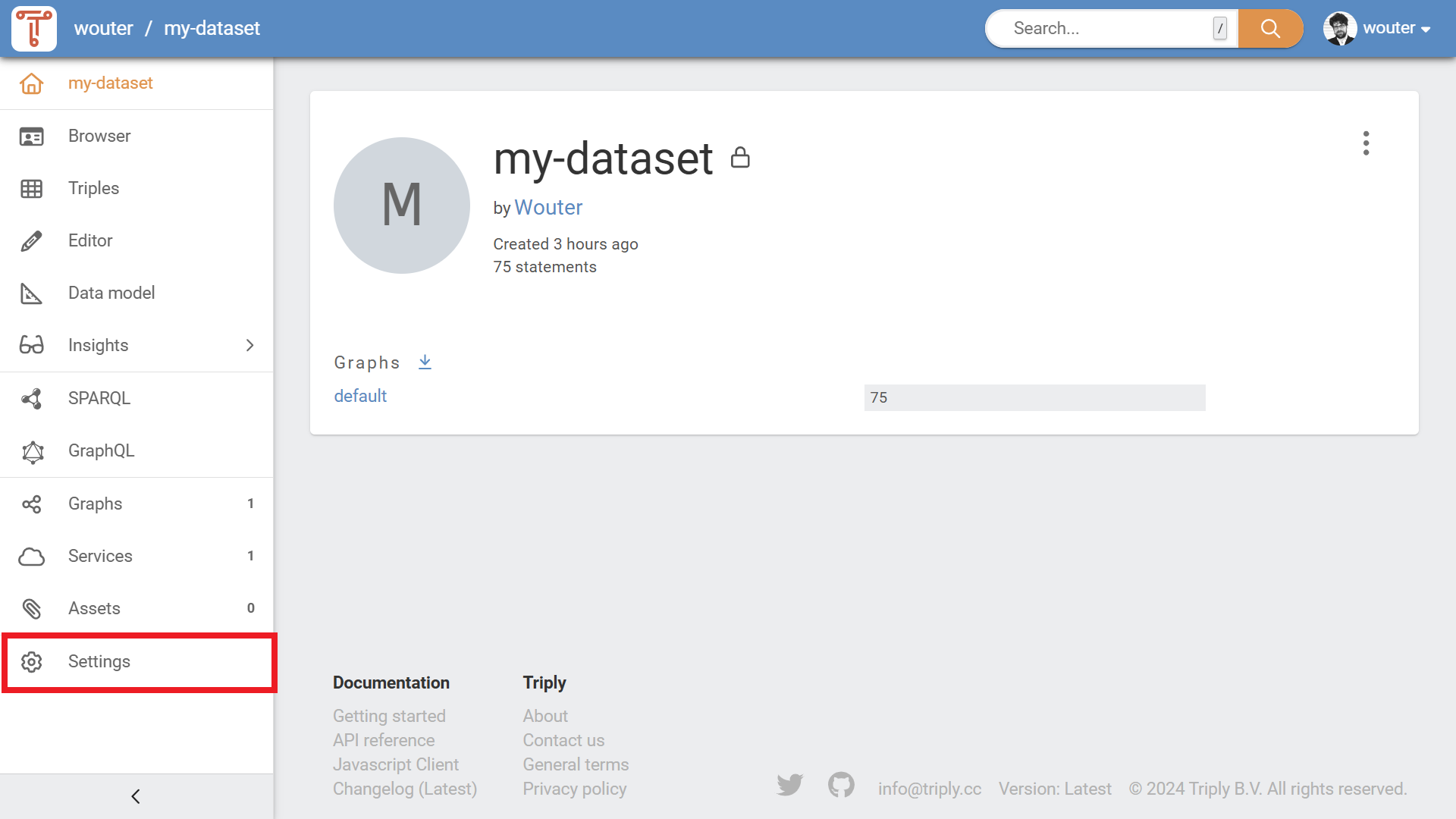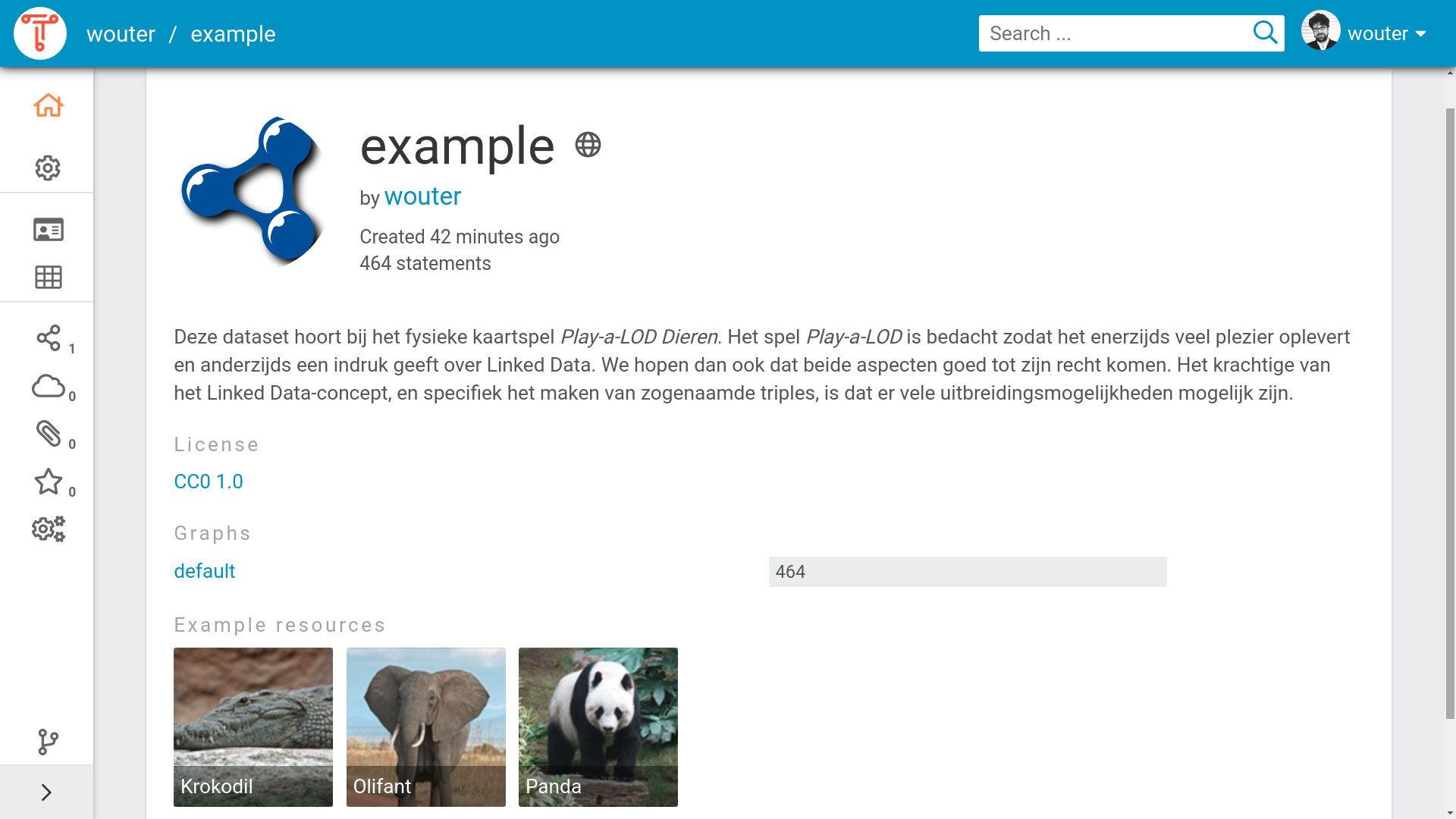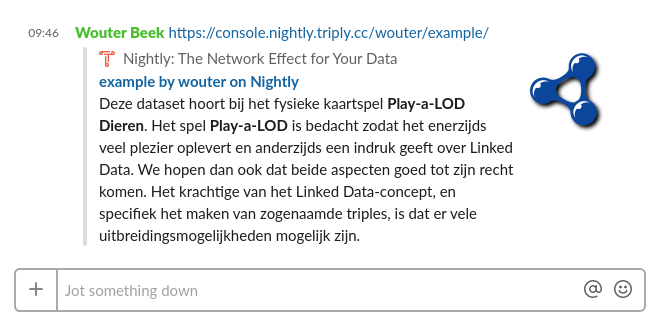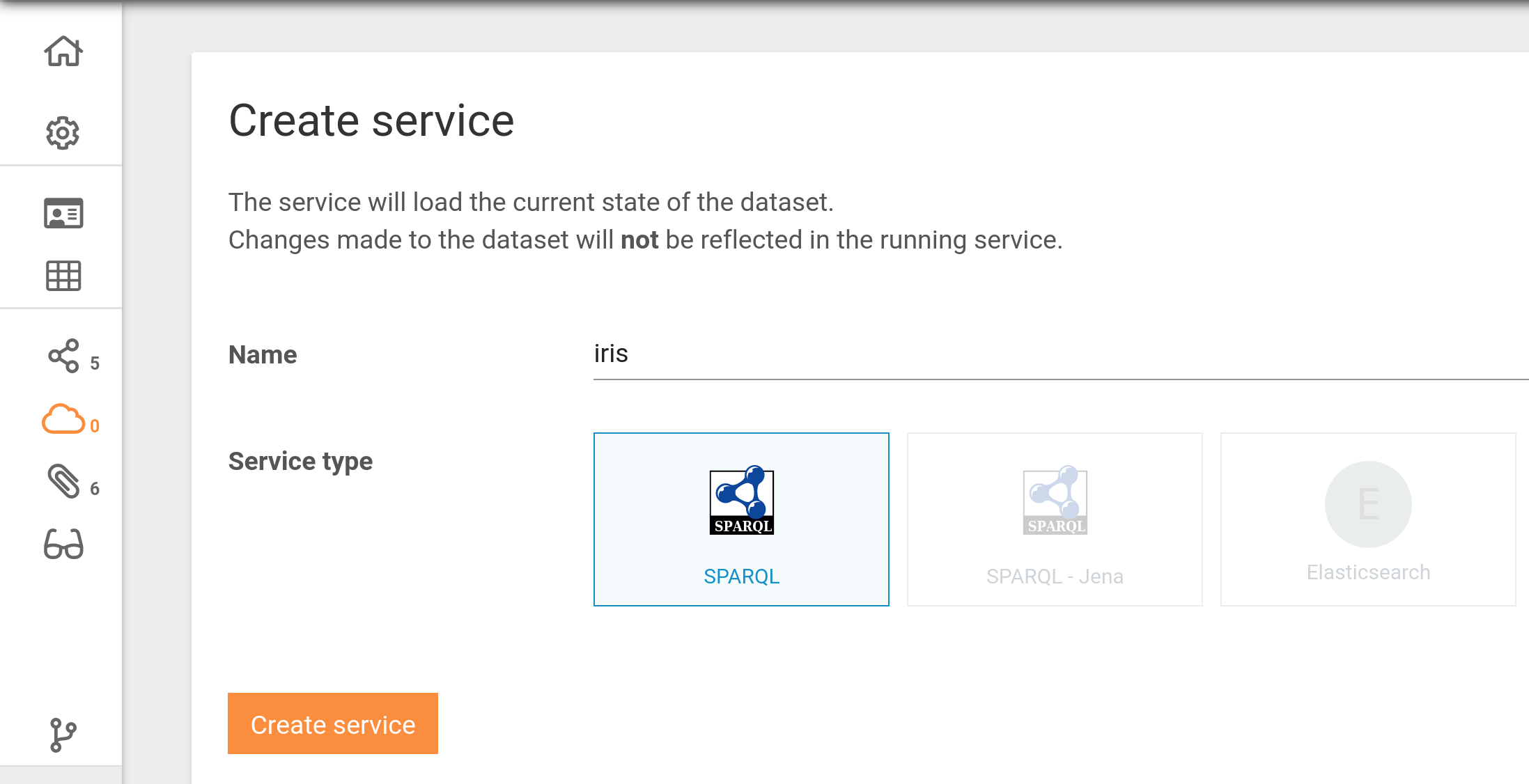Sharing data¶
With TriplyDB you can easily make your data available to the outside world.
Sharing your dataset¶
You can share your dataset by setting the visibility to “Public” in the dataset settings menu. Making a dataset public in TriplyDB has the following consequences:
- The dataset can be searched for and visited by anybody on the web.
- The dataset will be indexed by web search engines such as Google Dataset Search.
- Any services that are started for that dataset will be available to anybody on the web. This includes SPARQL, Text Search, and Linked Data Fragments.
Dataset settings page¶
The dataset settings page can be accessed from any dataset page. It appears as the last item in the menu to the left (see Figure 1).

The dataset settings page contains the following items:
- Update dataset profile
- Prefixes
- Transfer ownership
- Delete dataset
- Webhooks
Update dataset profile¶
The "Update dataset profile" pane (see Figure 2) allows the following things to be configured:
- Dataset Access Level, see Section Access Levels.
- Dataset metadata, see Section Dataset metadata.

Dataset metadata¶
Adding metadata for your datasets is important. This makes it easier to find your dataset later and also allows search engines and social media applications to understand your dataset.
The "Update dataset profile" pane allows the following metadata to be configured:
- Dataset name
- Dataset slug
- Dataset description
- Example resources
- License
- Avatar
Within the TriplyDB instance your dataset is now more findable for users. Whenever a user searches on one of the topics of your dataset, or types in a word that is present in the description of your dataset, the dataset will be shown as a search result. The metadata will allow TriplyDB to give a better impression of your dataset when a user visits. Figure 3 shows the dataset homepage of a dataset for which metadata has been configured.

Search engines and social media applications can recognize the metadata that is entered for datasets in TriplyDB. Figure 4 shows an example of a Social Media widget in the Slack chat application. Such widgets are automatically generated upon entering the link to a public dataset in TriplyDB. The chat application in Figure 4 understands the metadata properties: title, description, and image. Different Social Media applications may make use of different metadata properties.

Starting services¶
By default, datasets in TriplyDB can be queried through TriplyDB-js as well as through the Linked Data Fragments API.
In order to allow additional query paradigms, specific services can be started from the “Create service” page. This page is accessed by clicking on the “Services” icon in the left-hand sidebar.
TriplyDB instances can be configured with different types of services. The below screenshot shows the “Create service” page for a TriplyDB instance that allows SPARQL, Jena SPARQL, and Elasticsearch services to be created.
 Notice that three different types of services can be created.
Notice that three different types of services can be created.
It is possible to create multiple services for one dataset.
Existing services¶
Existing services are displayed on service widgets (see screenshot). From these widgets, services can be created or deleted.

Datasets can change whenever a graph is added, deleted or renamed. When this happens, the data in a service is out of sync with the data in the dataset and a synchronization button will appear in the service widget. By clicking the button, the service will be synchronized with the current state of the dataset.
Webhooks¶
If you want to be notified or trigger an event when anything changes in your dataset, you can set up a webhook.
The webhook page can be found under dataset's settings on the right, as shown in the image below.

To create a webhook, you will need to provide the following information:
Payload target: The URL to which the webhook message should be sent.Payload format: The format of the message.Trigger events: Select for which event you wish to trigger the webhook. The options are:- Graph import: Happens when data is imported from a different dataset and where the data is already stored on the instance.
- Linked data upload: Happens when a person uploads data to the instance. The data did not exist on the instance before.
- Asset upload: Happens when an asset is uploaded.
You can activate or deactivate the webhook with the slider after the Webhook is active message.
After filling in everything, you can click on the SUBMIT button and the new webhook will be activated.
For example, if you wish to trigger a pipeline on gitlab every time you upload an asset to your dataset, you can use the below snippet as a payload target, as described on the official gitlab documentation and select Asset upload as a trigger event.
https://gitlab.example.com/api/v4/projects/<project_id>/trigger/pipeline?token=<token>&ref=<ref_name>
When your webhook is created and active, you can see every occasion the webhook was called in the webhook trigger history.
